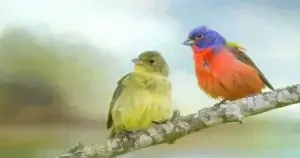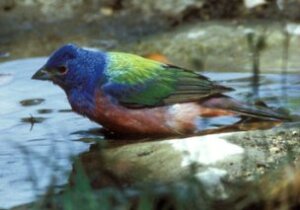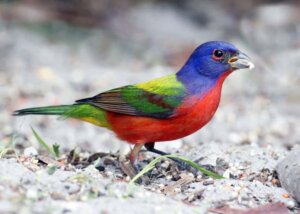Do Painted Buntings Have Any Special Flight Patterns? Discover Now!
Yes, Painted Buntings have special flight patterns. These colorful birds exhibit unique behaviors in the air.
Painted Buntings, known for their vivid plumage, also have distinct flight patterns. Their movements are not just beautiful but serve important purposes. Understanding these patterns helps bird watchers and researchers learn more about their habits. Painted Buntings often fly in short bursts, with rapid wing flaps followed by gliding.
This behavior aids in conserving energy while navigating their environment. Observing these patterns can be a delightful experience for bird enthusiasts. In this blog, we explore the specifics of Painted Buntings’ flight, uncovering what makes their aerial display so special. Join us as we dive into the fascinating world of these stunning birds and their remarkable flight behaviors.
Introduction To Painted Buntings
Painted Buntings are among the most colorful birds in North America. Their vibrant feathers make them a favorite for bird watchers. These small songbirds have many unique qualities. This section will introduce you to Painted Buntings, showcasing their unique features and habitat.
Unique Features
Painted Buntings have bright, eye-catching plumage. Males display a mix of blue, green, red, and yellow feathers. Females and young birds are green and yellow. Their song is also distinct. It consists of a series of sweet, high-pitched notes. These birds are a treat for both the eyes and ears.
Habitat And Distribution
Painted Buntings live in the southeastern United States. They prefer habitats with dense brush and shrubs. During breeding season, they can be found in coastal areas and woodlands. In the winter, they migrate to Central America. They adapt to different environments but need cover for nesting and protection.

Credit: bhic.org
Flight Patterns Observed
The Painted Bunting is a small, colorful bird known for its distinct flight patterns. Observing their flight behavior provides insight into their fascinating lives. This section delves into the typical flight behavior and migration routes of these birds.
Typical Flight Behavior
Painted Buntings exhibit unique flight characteristics. Their flight is usually quick and direct. They often fly low to the ground and weave through dense vegetation. Their wings beat rapidly, creating a fluttering sound.
During courtship, males perform special flight displays. They rise into the air, singing melodious tunes. Then they quickly descend, showing off their bright plumage. This behavior attracts females and establishes territory.
Migration Routes
Painted Buntings are migratory birds. They travel great distances between breeding and wintering grounds. In summer, they breed in the southern United States, including Texas and Florida. They prefer habitats with dense cover, such as thickets and edges of forests.
Come fall, they migrate south to Central America. Their journey is long and perilous. They face threats like predators and habitat loss. Yet, they follow the same routes each year, guided by instinct.
Their migration is a marvel of nature. It showcases their resilience and adaptability. By studying their flight patterns, we can learn more about these stunning birds.
Seasonal Flight Variations
Painted Buntings are known for their vibrant colors and unique flight patterns. These patterns change with the seasons, reflecting their needs and behaviors during different times of the year. Understanding these variations can offer fascinating insights into their migratory habits.
Breeding Season Movements
During the breeding season, Painted Buntings exhibit specific flight patterns. These birds typically migrate northward to breeding grounds in the spring. They prefer to nest in dense, shrubby areas. Males often establish territories and perform flight displays to attract females. These displays include short, rapid flights with frequent changes in direction. This behavior helps them to mark their territory and appeal to potential mates.
Wintering Patterns
In winter, Painted Buntings migrate to warmer regions, such as Central America and the southern United States. Their flight patterns during this time are less erratic and more direct. They tend to fly in small flocks, staying close to food sources. Their wintering habitat includes grassy areas and tropical forests. These locations provide ample food and shelter from predators.
| Season | Flight Pattern | Behavior |
|---|---|---|
| Spring | Short, rapid flights | Territory establishment, mate attraction |
| Winter | Direct, flock-based flights | Migration to warmer regions, foraging |
Understanding these seasonal flight variations can help bird watchers predict Painted Buntings’ movements. This knowledge enhances the bird-watching experience, allowing for better planning and observation.
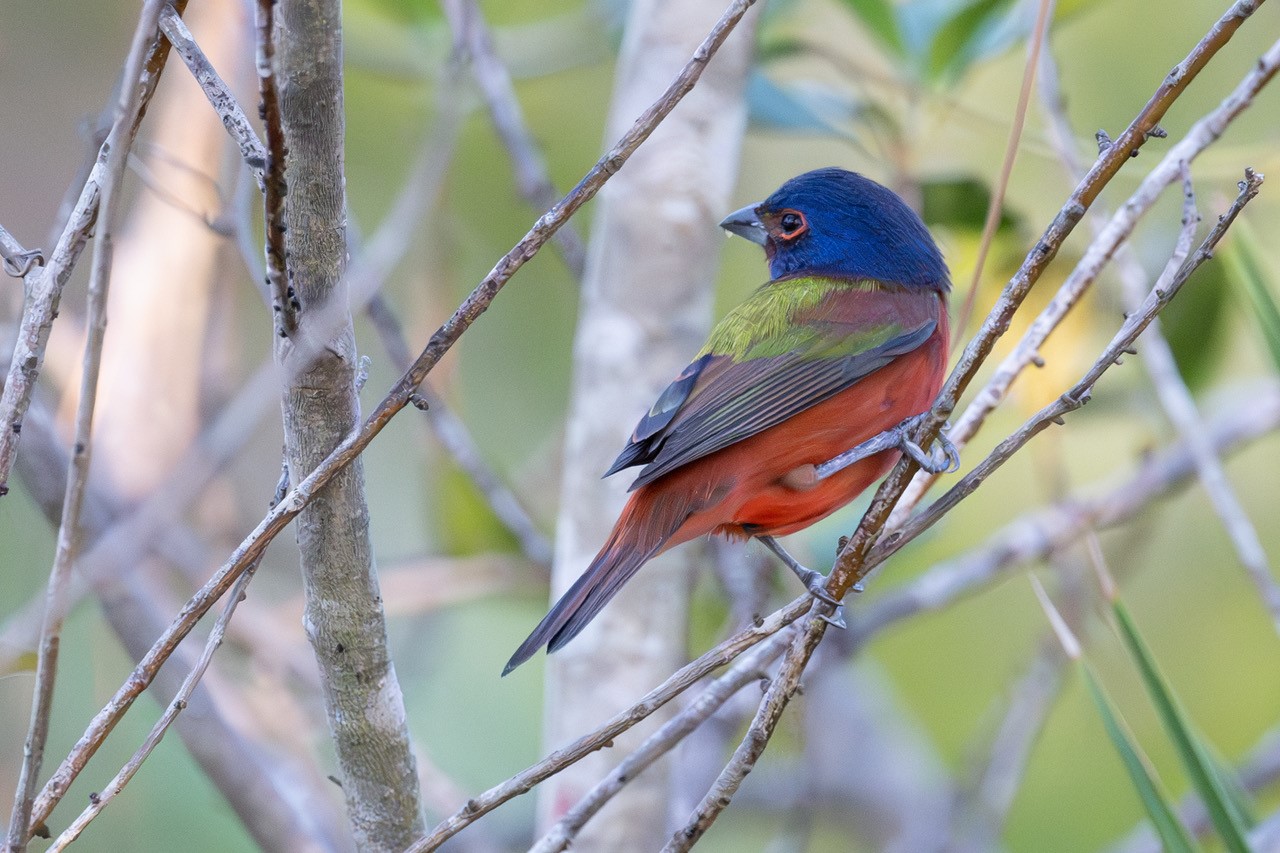
Credit: www.naplesgarden.org
Factors Influencing Flight
Painted Buntings have unique flight patterns influenced by various factors. Understanding these factors helps in appreciating their behavior and survival strategies.
Weather Conditions
Weather plays a crucial role in the flight patterns of Painted Buntings. These birds prefer clear, calm skies for long-distance travel. Strong winds can hinder their movement, making them seek shelter. During rainy seasons, they reduce their flying time to conserve energy and avoid getting drenched.
| Weather Condition | Flight Behavior |
|---|---|
| Clear Skies | Increased flight activity |
| Strong Winds | Reduced flight, seek shelter |
| Rainy Weather | Minimal flight, conserve energy |
Predation Risks
Predation risks significantly influence the flight patterns of Painted Buntings. These birds are always on the lookout for predators. They often fly in short bursts, making sudden changes in direction to avoid being caught. During migration, they choose routes with fewer predators. This cautious behavior ensures their survival in the wild.
- Short, erratic flights
- Sudden changes in direction
- Choosing safer migration routes
Understanding these factors provides insight into the survival strategies of Painted Buntings. Their flight patterns are a testament to their adaptability and resilience.
Comparisons With Other Songbirds
When discussing painted buntings and their flight patterns, it’s intriguing to compare them with other songbirds. Understanding these comparisons helps bird enthusiasts and ornithologists appreciate the unique characteristics of painted buntings.
Similarities
Painted buntings share several flight characteristics with other songbirds. Here are a few:
- Wingbeats: Like many songbirds, painted buntings exhibit rapid, consistent wingbeats.
- Short flights: They often make short, quick flights between perches.
- Migratory behavior: Both painted buntings and other songbirds migrate seasonally, covering long distances.
Differences
Despite similarities, painted buntings have distinct flight patterns compared to other songbirds. Here are some differences:
| Feature | Painted Buntings | Other Songbirds |
|---|---|---|
| Flight speed | Moderate | Varies (some faster, some slower) |
| Flight style | More fluttering | Gliding and fluttering mixed |
| Altitude | Low to mid-level | Varies widely |
These differences highlight the unique adaptations of painted buntings in their natural habitats.
Conservation Efforts
Painted Buntings are among the most beautiful birds in North America. Their stunning colors make them a favorite for bird watchers. Despite their beauty, they face many threats. Conservation efforts are crucial to protect these birds.
Protecting Habitats
Habitat loss is a major threat to Painted Buntings. Urban development and agriculture reduce their natural habitats. Conservation groups work hard to protect and restore these areas. They aim to preserve the environments where these birds thrive.
National parks and wildlife reserves play a vital role. These protected areas provide safe spaces for Painted Buntings. Conservationists also encourage responsible land management. This includes planting native trees and shrubs that support bird life.
Tracking Migration
Tracking migration patterns helps in conservation. Scientists use various tools to study Painted Buntings’ movements. GPS trackers and banding provide valuable data. This information helps identify critical habitats and migration routes.
Citizen science projects also contribute. Bird watchers report sightings and behaviors. This data helps build a bigger picture of the birds’ lives. Together, these efforts improve our understanding and conservation of Painted Buntings.
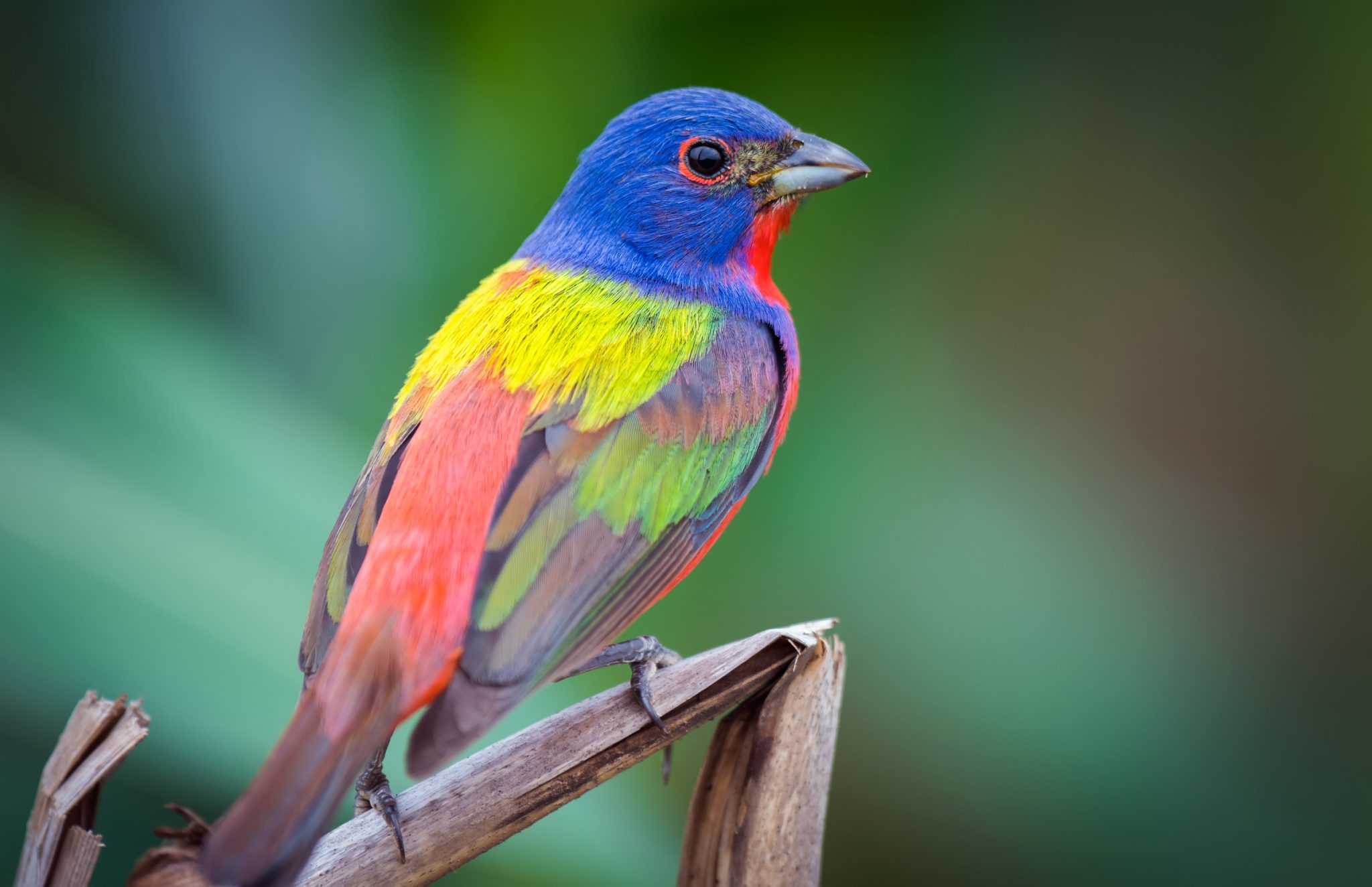
Credit: academy.allaboutbirds.org
Frequently Asked Questions
What Are Painted Buntings’ Flight Patterns Like?
Painted Buntings have a fluttery, undulating flight pattern. They frequently alternate between flapping and gliding. This pattern helps them conserve energy.
Do Painted Buntings Migrate?
Yes, Painted Buntings migrate. They travel between their breeding grounds in the southeastern United States and their wintering habitats in Central America.
How Do Painted Buntings Fly?
Painted Buntings fly with rapid wing beats. Their flight is buoyant and bouncy, often characterized by short bursts of speed.
Are Painted Buntings’ Flight Patterns Unique?
Yes, their flight patterns are unique. The undulating, fluttering style distinguishes them from other songbirds, aiding in their identification.
Conclusion
Painted Buntings have unique flight patterns that captivate bird watchers. Their colorful feathers make them easy to spot in the wild. They often fly in short, quick bursts. This helps them navigate dense forests and avoid predators. Observing their flight can be a delightful experience.
These birds add beauty and wonder to nature. By learning more about their flight, we can appreciate their role in the ecosystem. Keep an eye out for these vibrant flyers on your next outdoor adventure.
Hello Dear, I'm Poli Kolymnia, owner of many birds (including budgies).
With a deep passion for these feathered companions, I'm here to share my expertise and extensive knowledge on birds care.
My articles cover essential topics like diet, housing, care, and health, providing practical tips to help you create a happy and thriving environment for your birds.


